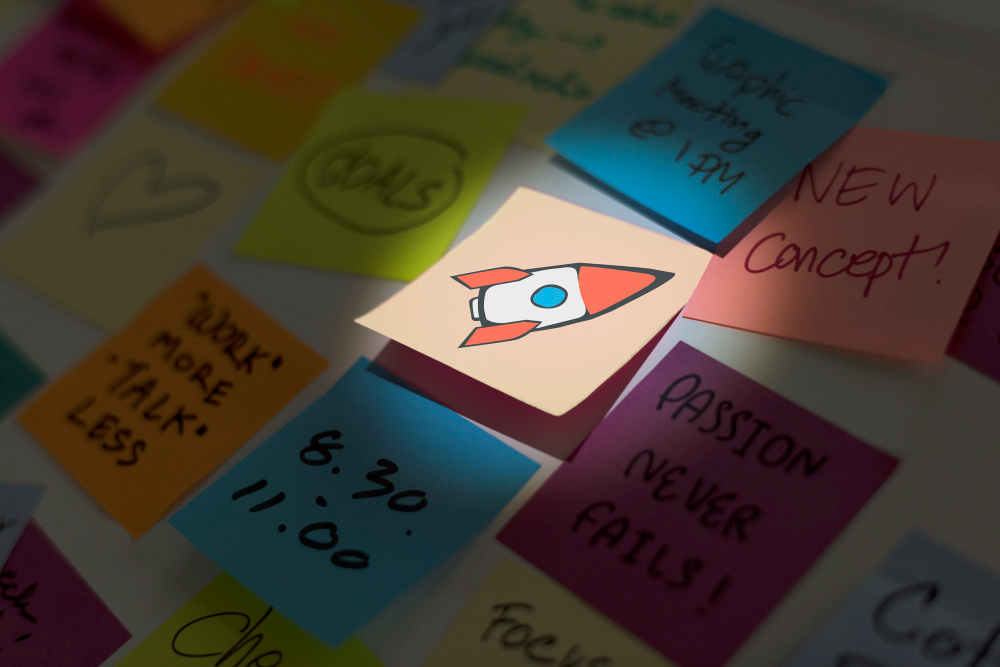Designing Your First MVP: Balancing Features, Functionality and User Experience
Ideateplus October 28, 2024
Developing a Minimum Viable Product (MVP) involves building the foundation for your product’s future success. This crucial early-stage version represents your product’s core offering, stripped down to its essential components to provide value, gain feedback, and validate assumptions. However, striking the right balance between features, functionality, and user experience (UX) at this early stage is challenging. Read on to learn how to design an MVP that is both practical and user-centric.
What is an MVP?
An MVP is a version of your product with just enough features to satisfy early adopters and gather valuable feedback. It’s not about building a half-done product, but rather focusing on delivering the key value proposition while cutting out non-essential features. The goal is to test your product in the market without using up significant resources, time, or effort.
This initial version of your product allows you to learn from users’ interactions and feedback, offering a path to refine, pivot, or improve the product. But the question is, how do you balance the need for useful functionality with the overall user experience?
Define Your Core Functionality
The first step in designing an MVP is clearly defining your product’s core value. What is the problem your product solves, and how does it address that problem effectively? Your MVP should focus on that single, most important solution. It’s easy to get caught up in adding extra features, but remember, simplicity is key.
Prioritising Features
List all potential features and classify them based on their importance to your core offering. Divide them into three categories:
1. Must-Have Features: These are the non-negotiable features that your MVP cannot live without and form the backbone of your product.
2. Nice-to-Have Features: These features enhance user experience or add extra value, but they are not essential for the first release.
3. Future Features: Anything that doesn’t directly contribute to solving your core problem should be left for later versions.
Focusing on the “must-haves” ensures that your MVP remains streamlined while still providing the key functionality that your early users expect.
Focus on User Experience from Day One
While it’s tempting to treat UX as something you’ll improve later, poor user experience in an MVP can be detrimental. Even if your product solves a real problem, users won’t stick around if it’s clunky, hard to use, or frustrating. You must ensure that your MVP delivers a smooth and intuitive experience.
Simplicity Over Complexity
A common mistake new product teams make is cramming too many features into an MVP, making it overly complex. Users don’t need all the bells and whistles from the start. Focus on crafting an interface that is clean, straightforward, and easy to navigate. This simplicity will keep users engaged and allow them to focus on your product’s core value.
Testing UX Early
User testing should be integrated into your design process from the beginning. Create wireframes or prototypes and gather feedback from potential users. Their insights will help you refine the navigation, user flow, and interface. Early testing will also save time and effort later by identifying pain points before the product is fully developed.
Consistency is Key
Make sure your design style is consistent throughout the product. This includes colour schemes, typography, and button styles. A coherent design provides a sense of familiarity and comfort for users, which enhances overall usability and makes it more pleasing on the eye. Perception can make or break your product in its early stages.
Balancing Functionality and UX
Your MVP needs to strike the right balance between functionality and UX. While it’s important to include the features users need, it’s equally important to ensure they enjoy using your product. Consider this balancing act as a see-saw, where one side represents your product’s usability, and the other its functional value. Both need to be in harmony for your MVP to succeed.
Designing your MVP is not a one-and-done process. The real power of an MVP comes from iterative development. Once it is live, gather feedback from actual users and then refine and improve the product.
Adapt and Evolve
Use analytics and user feedback to understand which features are working, which ones aren’t, and what users actually value. This data-driven approach allows you to adapt the product based on real-world usage, improving both functionality and UX over time.
Once your MVP is live, you should have a clear plan for future iterations. This roadmap will be informed by user feedback, helping you prioritise feature enhancements, bug fixes, and UX improvements for future updates.
Designing an MVP is about finding the sweet spot between features, functionality, and user experience. By defining core functionality, focusing on simplicity, and iterating based on user feedback, you can create a product that solves a real problem, provides a positive user experience, and has room to grow.
Ultimately, your MVP is the starting point in a much larger journey. Keep it focused, flexible, and user-centred, and you’ll be on your way to building a successful product.